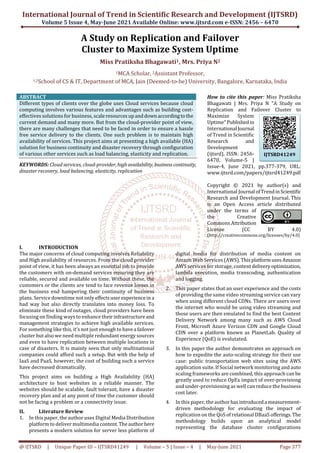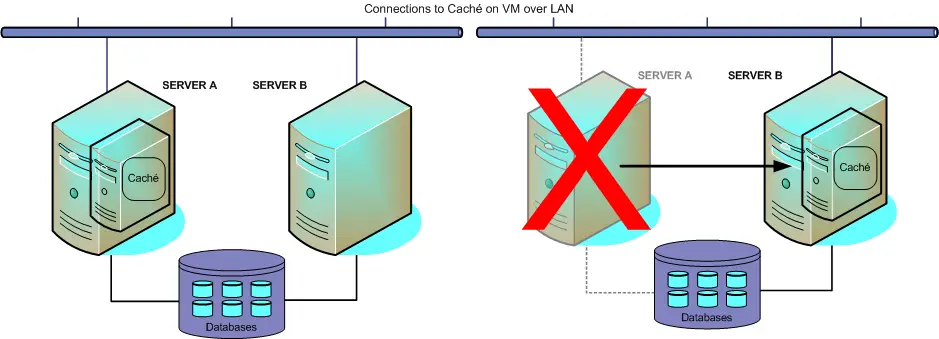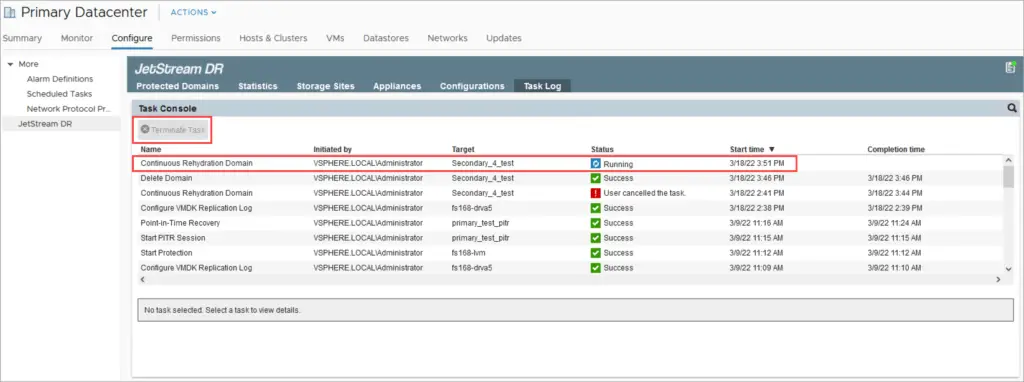CDN Failover Strategies: Ensuring Continuous Content Delivery

Content Delivery Networks (CDNs) play a crucial role in providing fast and reliable access to online content. However, even with robust infrastructure, unexpected outages or performance issues can occur. Failover strategies are essential to minimize downtime and maintain continuity of service.

Types of CDN Failover Strategies

1. Geographic Failover
- Concept: Designates different geographic regions as primary and backup.
- Mechanism: If the primary region experiences an outage, traffic is automatically routed to the backup region.
- Benefits: Ensures content availability from a nearby region, reducing latency and performance degradation.
2. Active-Passive Failover
- Concept: Maintains a primary CDN node and a standby node that is active but not serving traffic.
- Mechanism: If the primary node fails, the standby node is instantly activated to take over traffic.
- Benefits: Fast failover, seamless transition, and high availability.
3. Load Balancing with Failover
- Concept: Distributes traffic across multiple CDN nodes.
- Mechanism: If one node experiences an issue, the load balancer automatically routes traffic to the remaining nodes.
- Benefits: Ensures high availability and optimal performance, even under heavy load conditions.
4. DNS Failover
- Concept: Uses Domain Name System (DNS) to direct traffic to different CDN endpoints.
- Mechanism: If the primary endpoint becomes unavailable, the DNS server responds with the backup endpoint’s IP address.
- Benefits: Transparent to end-users, simple to implement, and cost-effective.
Considerations for Failover Strategy Selection
- Content Criticality: The importance of the content and its impact on user experience.
- Performance Requirements: The desired latency, availability, and throughput.
- Cost: The expense of implementing and maintaining the failover solution.
- CDN Provider Support: The availability of the failover feature and its support level from the CDN provider.
Best Practices for Failover Implementation
- Define Clear Failover Criteria: Determine the specific conditions that trigger failover.
- Test and Monitor Failover: Conduct regular tests to verify the effectiveness of the failover mechanism and monitor performance.
- Use Geo-location for Routing: Direct traffic to the nearest CDN region based on user location.
- Configure Health Checks: Regularly check the availability and performance of CDN nodes to identify potential issues early.
- Consider Different Failover Modes: Implement multiple failover strategies to provide redundancy and flexibility.
Conclusion
CDN failover strategies are essential to ensure continuous content delivery and minimize downtime. Understanding the types of strategies, their benefits, and the considerations involved in selection empowers organizations to design effective failover solutions that meet their specific requirements. By implementing robust failover mechanisms, businesses can enhance the resilience of their online presence and deliver seamless user experiences.## Cdn Failover Strategies: Ensuring Continuous Content Delivery
Executive Summary
Content Delivery Networks (CDNs) play a critical role in ensuring fast, reliable, and secure delivery of online content. However, CDNs are not immune to disruptions, which can lead to significant performance degradation and revenue loss for businesses. To mitigate these risks, businesses must implement robust CDN failover strategies that ensure continuous content delivery even in the face of outages or performance issues.
Introduction
CDNs distribute content across geographically dispersed servers, improving performance and reducing latency for end-users. However, various factors can disrupt CDN performance, including network disruptions, hardware failures, cyberattacks, and natural disasters. These disruptions can result in slow page loading, video buffering, and service outages, negatively impacting user experience and business outcomes.
FAQs
-
What is CDN failover?
- CDN failover is a mechanism that redirects content traffic to a backup server or CDN provider in case of primary CDN disruption.
-
Why is CDN failover important?
- CDN failover ensures uninterrupted content delivery, minimizing revenue loss, improving user experience, and enhancing brand reputation.
-
How can I implement CDN failover?
- Implement multiple CDN providers, configure DNS failover, utilize load balancers, monitor CDN performance, and conduct regular testing.
Top 5 Subtopics
Types of CDN Failover
- DNS-based Failover: Redirects traffic based on DNS records, offering quick and seamless failover.
- Layer 4 Failover: Utilizes a load balancer to redirect traffic to backup servers based on IP addresses.
- Layer 7 Failover: Redirects traffic based on application-specific parameters, providing granular control over failover.
- Geo-based Failover: Routes traffic to the closest available server, ensuring optimal performance for users in different regions.
CDN Failover Best Practices
- Multiple CDN Providers: Partner with multiple CDN providers to reduce dependency on a single vendor.
- DNS Failover Configuration: Configure DNS records to prioritize backup servers in case of primary server failure.
- Load Balancing: Implement load balancers to distribute traffic across multiple servers, enhancing scalability and reliability.
- Performance Monitoring: Continuously monitor CDN performance through tools like Pingdom, Uptime Robot, or internal monitoring systems.
Testing and Recovery
- Regular Testing: Conduct regular failover testing to ensure failover mechanisms are working correctly.
- Incident Response Plan: Develop a clear incident response plan outlining steps to take during CDN outages or disruptions.
- Content Caching: Utilize caching mechanisms to reduce the impact of outages by serving content from local storage.
Cloud-based CDN Failover
- Multi-Cloud Failover: Distribute CDN infrastructure across multiple cloud platforms to enhance resilience and reduce vendor lock-in.
- Edge Computing: Leverage edge computing capabilities to reduce latency and improve content delivery performance.
- Serverless Functions: Utilize serverless functions to automate failover processes, reducing complexity and operational overhead.
Advanced CDN Failover Techniques
- Active-Active Failover: Utilizes two or more primary CDNs that actively serve content, ensuring high availability.
- Global Server Load Balancing (GSLB): Distributes traffic across geographically dispersed servers based on performance metrics and user location.
- Content Replication: Replicates content across multiple servers to reduce the impact of server failures or network disruptions.
Conclusion
CDN failover strategies are essential for businesses relying on CDNs to deliver content to end-users. By implementing robust failover mechanisms businesses can minimize the impact of CDN outages and ensure continuous content delivery even during disruptions. This enhances user experience, protects revenue streams, and boosts business reputation.
Keyword Tags
- CDN Failover
- Content Delivery
- Disaster Recovery
- High Availability
- Performance Optimization
